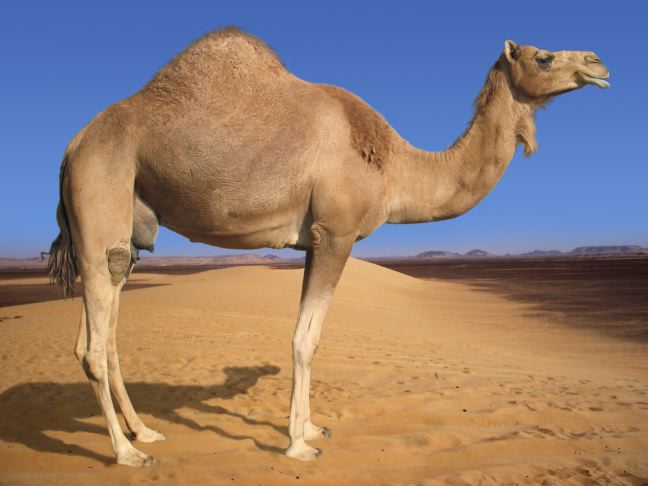Team members
Names / Roles:
- [Chandni] (Leader)
- [Pamela] (Wiki Writer)
- [Miyoko] (Researcher)
- [Germaine] (Researcher)
- [Vy] (Researcher)
Overview
In this section, include a brief description of the allocated ecosystem. You should include the following information:
-
Location of the ecosystem
Deserts are found all over the world. They are usually found at the hottest / coldest parts of a country.
-
Description of ecosystem ~ The desert is a landscape or region which is very dry due to low amounts of rainfall and has often very little coverage of plants. Deserts usually receive less than 25 cm of rain a year and they lose water faster than what they receive Plants living in the desert have adapted to the arid environment by having spiny leaves which resemble horns to reduce the lost of water through the leaves. Deserts are classified as `cold` and `hot` deserts. The cold deserts are also known as Cold Tundra
-
Biodiversity of ecosystem (richness of life in ecosystem)
There are many species of animals found in deserts. Usually, people would assume that not many animals are able to survive the heat of the desert but you would be surprised at the number of Amphibians, Arthropods, Birds, Mammals and Reptiles that are found. There are 1,468 different species of animals that live in the desert.
Physical Factors
Search the Internet for information on the following physical factors in the allocated ecosystem.
- Light (availability of sunlight in the ecosystem),
Water vapour in the atmosphere traps long wave infrared-radiation from the ground so dry desert air is incapable of blocking sunlight during the day, due to absence of clouds, or trapping heat during the night. Therefore, during daylight, most of the sun's heat reaches the ground and as soon as the sun sets, the desert cools quickly by radiating its heat into space.
- Temperature (temperature of the ecosystem),
Hot deserts usually have high daytime temperatures and low nighttime temperatures due to extremely low humidity. The temperature for hot deserts in the daytime can reach 45°C or higher in the summer and 0°C or lower at nighttime in winter.
- Water (water quality in the ecosystem),
Deserts can be described as places where more water is lost by evapotranspiration rather than falling as precipitation. Desert plants have special adaptations that help them to survive with little water. Deserts generally receive less than 25 cm of rain every year. Atacama is the driest place on Earth and is sterile because it is blocked from moisture on both sides by the Andes mountains and by the Chilean Coast Range.
- Salinity (freshwater or seawater found in the ecosystem).
Freshwater and seawater is not found in deserts.
- Air (quality of air in the ecosystem),
The air found in deserts is dry. The air is dry because when the air moves over the mountains, it cools and the moisture condenses, causing precipitation on the windward side. As that air reaches the leeward side, it is dry because it has lost the majority of its moisture. It then warms, expands and blows across the desert.
- pH of the environment (how acidic or alkaline the ecosystem is),
There is no pH in a desert.
- mineral salts (availability of nutrients and mineral salts in the ecosystem)
Deserts can contain great amounts of mineral resources over their entire surface. This occurrence in minerals also determines the colour. The red colour in many sand deserts is a result of the occurrence of laterite. Valuable minerals can be found in deserts such as copper in the United States, Chile, Peru and Iran; iron and lead-zinc ore in Australia; gold, silver and uranium deposits in Australia and the United States.
Classification of Living Organisms
Classify at least eight of the living organisms found in the allocated ecosystem into the categories below:
- Producers ~ Cacti and Creosote bush
- Primary Consumers ~ Camel
- Secondary Consumers ~ Iguana
- Tertiary Consumers ~Snakes
- Decomposers~Termites and Dung beetles
For each of the living organism, find a picture and write a short description on the organism. You may wish to include feeding habits, region in the ecosystem where it is normally found etc.
Cacti is the one producer in the desert.Cacti is able to live in the desert because there is a water system inside the producer.they have spines to reduce water loss.

Creosote bush is another example of desert producers.
Camels are one primary consumer found in the desert.They do not store water in their humps.Instead,they store fatty tissues there.Camels have long eyelashes to prevent sand,dust and dirt from entering their eyes.Camels eat practically any type of vegetation.Some examples are salt bush and thornes.

Iguanas are a type of secondary consumers in the desert.They eat crickets and other creatures.

Snakes are tertiary consumers.
Termites are a type of decomposers in the desert ecosystem.
Dung beetles are also another type of decomposers in the desert.
archaeologyplanet.blogspot.com
Food Web
Create a food web using at least eight of the living organisms listed above. You may wish to use Microsoft PowerPoint to create your food web. Save your food web as a picture. Finally copy and paste your picture in this section of your wiki.
Interrelationship in Ecosystem
Give at least one example for each of the following relationships in the ecosystem:
- Predator-prey relationship-iguana being eaten by a snake.
- Parasitism-termites feeding on woods in the desert.
- Mutualism-crocodile eating its young for survival.
Useful Links
Plagarism is a strongly discouraged.
Include the links of all websites you obtained information from to complete your ecology wiki.
For example:
Wild World @ nationalgeographic.com ( http://www.nationalgeographic.com/wildworld/terrestrial.html )
- [Wiki Answers] http://wiki.answers.com/Q/How_many_animals_live_in_the_desert
- [Wikipedia] http://en.wikipedia.org/wiki/Desert
- [Wiki Answers] http://wiki.answers.com/Q/Why_can_cactus_live_in_the_Desert
- [Wiki Answers] http://wiki.answers.com/Q/What_are_the_secondary_consumers_of_the_desert
- [Wiki Answers] http://wiki.answers.com/Q/What_do_desert_iguanas_eat
- [Wiki Answers]http://wiki.answers.com/Q/What_are_the_decomposers_in_a_desert_ecosystem
- [Google Images] http://wildfell2011-5b-simpson.wikispaces.com/Food+Web